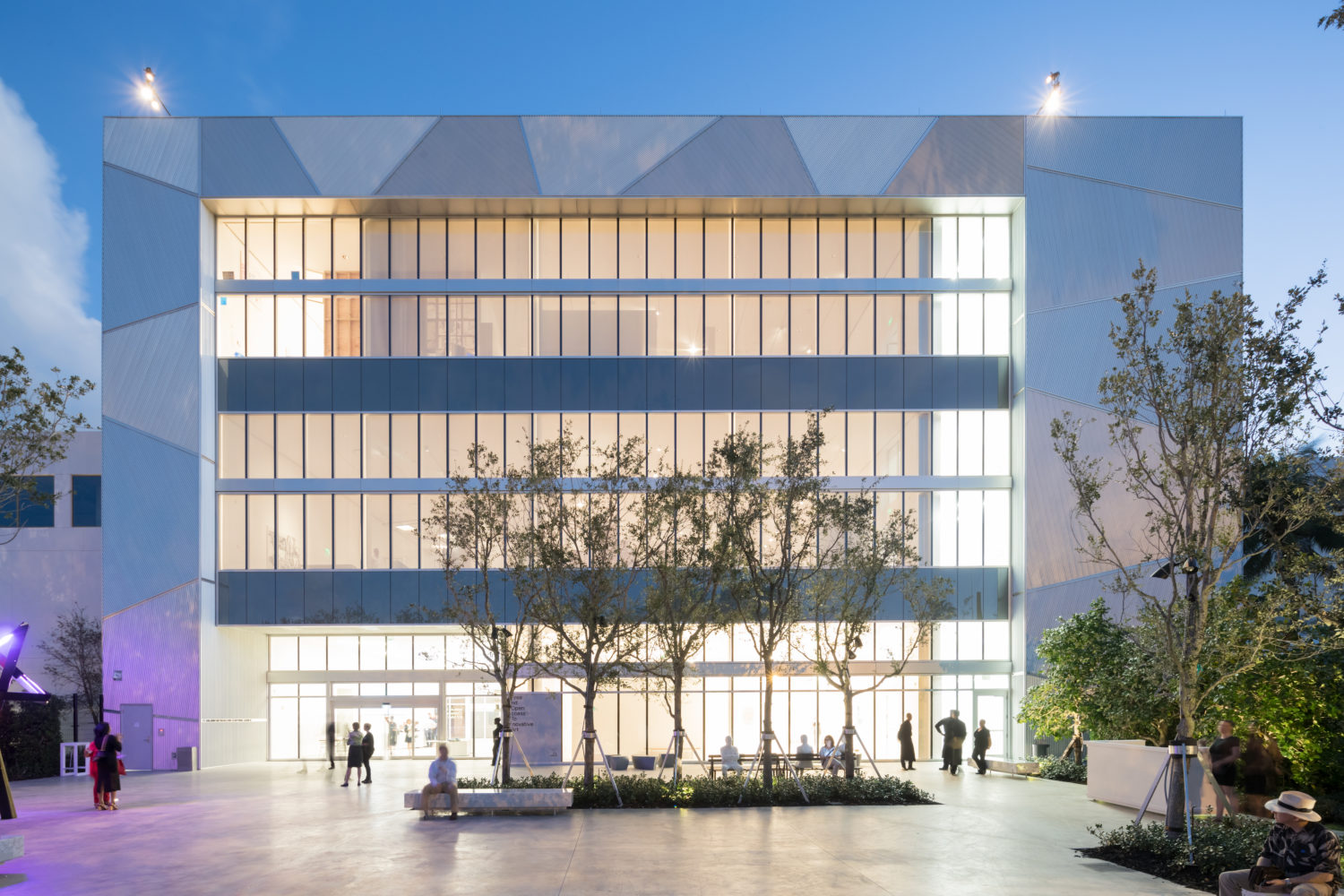
After splitting from the Museum of Contemporary Art North Miami and spending several years in temporary digs, the Institute of Contemporary Art Miami has now ended its time as a wanderer and opened the doors to its new home in Miami’s Design District.
Amid the bustle of Art Basel Miami Beach and all its satellite fairs, the museum is conducting a full-court press of programming, with an inaugural survey exhibition, along with several smaller shows and commissioned works; there’s also a roomy sculpture garden.
Nicole Eisenman, Morning Studio (2016). Courtesy of the artist.
“The Everywhere Studio,” the main inaugural show, organized by deputy director and chief curator Alex Gartenfeld, spans 1945 to the present, with some 100 works by artists from Pablo Picasso, Roy Lichtenstein, and Bruce Nauman to Carolee Schneemann, Faith Ringgold, and Andrea Zittel. Also featured are commissioned works by emerging artists including Margaret Honda and Matthew Angelo Harrison.
“The Everywhere Studio marks the first time ICA Miami has mounted such a far-reaching historical survey, placing the next generation of artists in dialogue with their predecessors and within an art historical framework,” said Gartenfeld in a press release. “The exhibition explores how artists create new ways of working and living in response to their historical and socio-economic conditions, often foretelling and epitomizing societal shifts and providing insight on influential forces in contemporary life that relate to us all.”
The 37,500-square-foot facility—which more than doubles the size of the museum’s previous home, in the Moore Building—also allows them to mount small solos of Edward and Nancy Kienholz, Senga Nengudi, and Hélio Oiticica; an installation of works by Robert Gober; and newly commissioned paintings by Chris Ofili and young Miami artist Tomm El-Saieh. The sculpture garden, meanwhile, plays host to works by the likes of Allora & Calzadilla and George Segal.
Exterior of the Institute of Contemporary Art, Miami. Photo by Iwan Baan.
The new building (the price of which the museum declined to disclose) features a bold façade, with multiple, silvery metallic shapes resembling a crazy quilt. It was designed by the Madrid-based firm Aranguren + Gallegos Arquitectos. Founded in 1987 by María José Aranguren Lopez and José González Gallegos, the firm has snagged commissions from many cultural institutions, including ABC Centre and the National Visual Arts Center, both in Madrid, and the Visigothic Museum, in Badajoz, Spain.
Left, Alex Gartenfeld, deputy director and chief curator. Image courtesy of ICA Miami. Photo by Silvia Ros. Center, María José Aranguren Lopez and José González Gallegos, Aranguren & Gallegos Arquitectos. Photo by Silvia Ros. Right, Ellen Salpeter, director, Institute of Contemporary Art, Miami. Image courtesy of ICA Miami. Photo by Rolando Diaz.
Among the principal supporters for the new building were auto dealing magnates Irma and Norman Braman (also among artnet News’s top 100 collectors). Irma Braman remains co-chair of the museum’s board, which, along with corporations and foundations, has ponied up most of the $75 million campaign to support construction, operations, and programs, says Salpeter. (The Gober works on view come from the Bramans’ collection.) The land for the building was donated by real estate developer Craig Robins.
The museum aims to set itself apart by the accessibility created by free admission and its central location, and also distinguishes itself outside the walls, said director Ellen Salpeter in an email. “We also are dedicated to extending our reach beyond gallery walls through institutional partnerships and our education and outreach programs,” said Salpeter, “which fill a void in advanced educational programming in the arts in Miami.”
The Institute of Contemporary Art, Miami. Photo by Iwan Baan.
The Institute of Contemporary Art, Miami. Photo by Iwan Baan.
View of the sculpture garden at the Institute of Contemporary Art, Miami. Photo by Iwan Baan.